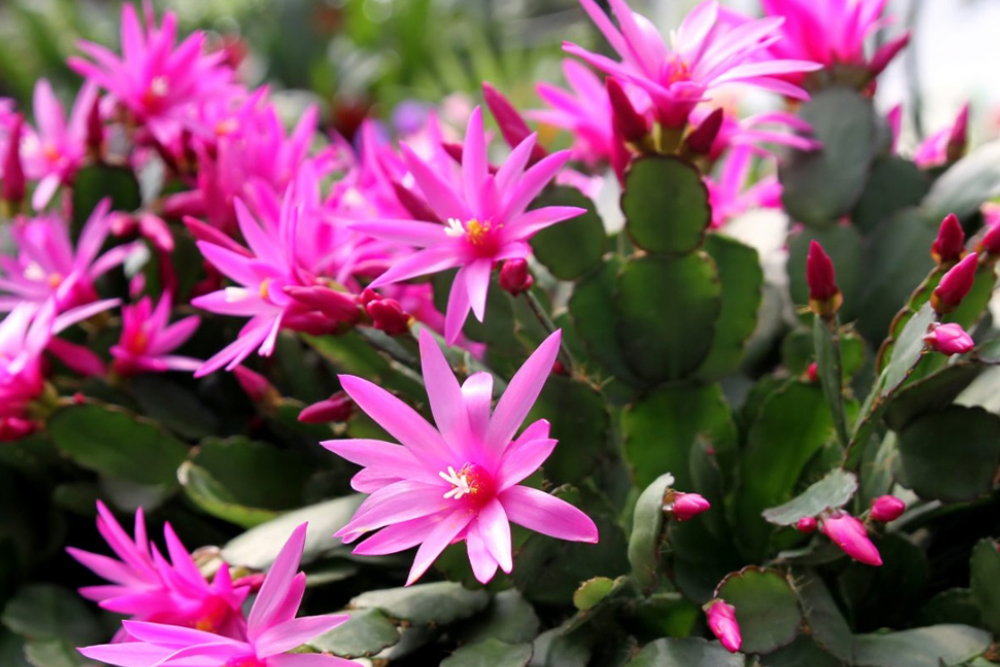The Easter Cactus, known botanically as Hatiora gaertneri or Rhipsalidopsis gaertneri, is an enchanting ornamental plant hailing from the lush regions of Brazil. It’s a part of the Cactaceae family, within the subfamily Cactoideae and tribe Rhipsalideae. It stands out for its distinctive flattened, leaf-like stems, which set it apart from the conventional cactus archetype. With an ornate display of colorful blooms in vibrant shades of pink, red, or orange, this cactus has captured the hearts of plant enthusiasts and has been a beloved addition to homes since its cultivation began in the late 19th century. The timing of its blooms has earned it the moniker “Easter Cactus,” as it typically adorns homes during the Easter season.
Epiphytic Growth
Rhipsalis, the Easter Cactus’s genus, is the largest epiphytic cacti, boasting approximately 35 recognized species and numerous varieties and subspecies. Epiphytic plants grow on other plants or objects for physical support and are not parasitic. This genus stands out from the typical desert-dwelling cacti. Rhipsalis species are adapted to the moist, shaded environments of rainforests, growing on trees or rocks in their native Central and South American habitats. Notably, Rhipsalis Baccifera has the unique distinction of being indigenous to parts of Africa and Sri Lanka, making it the only cactus that naturally occurred in the Old World.
Structurally Unique
The Easter Cactus and its relatives exhibit a unique aesthetic, characterized by their slender, segmented stems that can be flat or round and often cascade in curtain-like formations. This structural uniqueness is complemented by producing small, bell-shaped flowers that blossom into tiny, berry-like fruits in various colors, including white, yellow, red, or black.
Cultivation and Care
To care for an Easter Cactus, ensure it has bright, indirect light and avoid direct sun. Water it when the topsoil is dry, and keep the humidity high without overwatering. Maintain a temperature between 60-70°F, fertilize in the growing season, and prune after blooming. Repot every few years, and provide a cooler rest period post-flowering to encourage blooming.
Rhipsalis is appreciated not only for its decorative attributes but also for its symbolism. It’s presented as a token of affection in various cultures, reflecting its resilient and enduring nature. Furthermore, despite its rainforest roots, the Easter Cactus has minimal water needs. It is drought-tolerant and capable of storing water in its fleshy stems, which allows it to thrive even in less humid conditions.
These cacti are well-suited to indoor living due to their preference for lower light conditions compared to other cacti. This makes them excellent houseplants, especially since they contribute to air purification within the home. Some Rhipsalis species are nocturnal bloomers, with flowers that open at night to welcome pollination by nighttime creatures such as insects, bats, or moths.
The combination of its vibrant blooms, ease of care, and air-purifying qualities make the Easter Cactus a delightful and practical plant that enriches the atmosphere and aesthetic of any space it graces.





